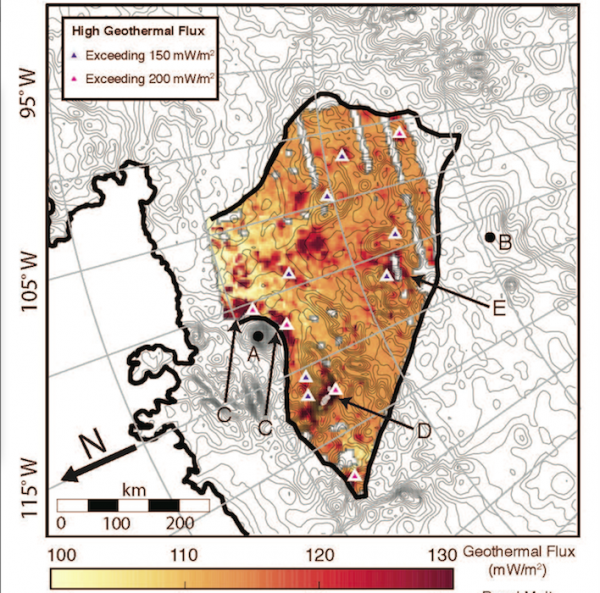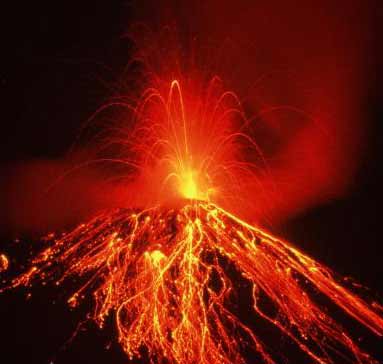
By Susannah Cullinane, CNN
The world’s oceans have become 26% more acidic since the start of the Industrial Revolution and continue to acidify at an “unprecedented rate,” threatening marine ecosystems, aquaculture and the societies that rely on them, scientists say.
In a report released Thursday, researchers say that carbon dioxide emissions from human activities such as fossil fuel burning are the primary cause of ocean acidification.
They say the rate of change may be faster than at any time in the last 300 million years, predicting that by 2100 there will have been a 170% increase in ocean acidity, compared to pre-industrial times.
The report is based on the findings from a September 2012 Symposium on the Ocean, at which 540 experts from 37 countries discussed research on ocean acidification, and has been updated with more recent research.
Unless carbon dioxide emissions are reduced, marine ecosystems will be damaged and the impact of climate change will be worsened, the scientists warn. “The only known realistic mitigation option on a global scale is to limit future atmospheric CO2 levels.”
The report says oceans currently act as a CO2 “sinkhole” absorbing approximately a quarter of emissions.
“As ocean acidity increases, its capacity to absorb CO2 from the atmosphere decreases. This decreases the ocean’s role in moderating climate change,” they write.
The increased acidity will also change the ocean environment, with evidence suggesting that some organisms will be less able to survive, while others, such as seagrass, may thrive.
Acidification is faster in Arctic waters because cold water is richer in CO2, while melting sea ice worsens the problem, they say.
“Within decades, large parts of the polar oceans will become corrosive to the unprotected shells of calcareous marine organisms,” the report says, while in the tropics the growth of coral reefs may be hampered.
“People who rely on the ocean’s ecosystem services are especially vulnerable and may need to adapt or cope with ocean acidification impacts within decades,” it says. “Tropical coral reef loss will affect tourism, food security and shoreline protection for many of the world’s poorest people.”
“Very aggressive reductions in CO2 emissions are required to maintain a majority of tropical coral reefs in waters favorable for growth,” the report says.
One of the report’s authors is Daniela Schmidt, from the University of Bristol, in the UK.
Schmidt said the research highlighted the impact acidification would have on biodiversity and aquaculture and the societies that rely on them for their food and economic well-being.
“We’re talking about countries that strongly depend on this, in warmer countries where there are complex problems with climate change as it is,” Schmidt said.
“What I’m hoping is that people realize that CO2 is not just a question of global warming. That we are acidifying the ocean at a rate that has been unprecedented — for millions and millions of years,” she said.
“The more CO2 emissions, the more acidification,” Schmidt said. “The ocean is in direct interchange with the atmosphere.”
If acidification continued to increase at its current rate, “you will definitely see damage,” she said. “The first signs we can already see today, in oyster farms off the West Coast of the United States.”
Schmidt said while 90% of the world’s ocean was in equilibrium with the atmosphere, some oyster hatcheries in this area were located in the 10% that wasn’t.
Oysters in the larval stage were much more vulnerable to damage, she said. “When (more acidic) water comes up and hits the hatchery, they close the whole thing.”
While tanks could be closed off to more acidic seawater, Schmidt said that by 2100 the issue would be there every day. “So we can’t just switch off that tap anymore.”
She said the report would be presented in Warsaw, Poland, on November 18, during the U.N. Conference of the Parties climate change meeting.
Schmidt said while she hoped the research would lead to stricter emissions limits, “the realist in me thinks that we’ve been discussing this for decades. This isn’t a problem that is just going to go away. It’s simple. The consequences are frightening.”
The 2012 symposium that led to the report was sponsored by the Scientific Committee on Oceanic Research, the Intergovernmental Oceanographic Commission of UNESCO, and the International Geosphere-Biosphere Programme.
http://www.cnn.com/2013/11/14/world/ocean-acidification-report/index.html?hpt=hp_t3










